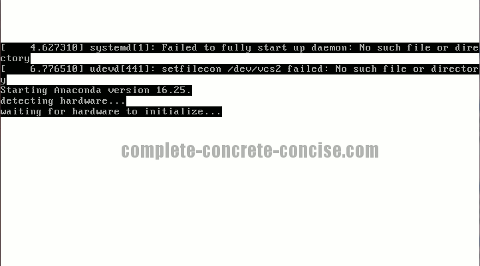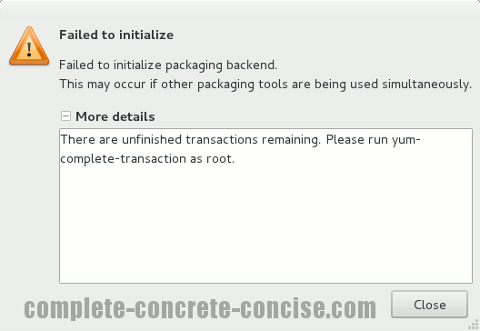UPDATED 11-May-2012
I have discovered that the problem with Software Updates and Add/Remove Software noted below was caused by VirtualBox Guest Additions not being correctly installed. This happened because
- the Linux kernel header files are not installed,
- GCC (a compiler) is not installed,
- make (a tool for GCC) is not installed.
Installing gcc and make was not a problem. Installing the Linux kernel header files was. For some reason, kernel-devel-3.1.0-7.fc16.i686.PAE is not available (I am sure if I hunt around some more, I will find it, but that is beside the point, I am interested in install, test, use not install and fiddle around until I get some semblance of a usable system.
Notwithstanding the problems it has with VirtualBox Guest Additions, I still find it hard to like or recommend Fedora 16:
(1) The Software and Add/Remove Software applications are very slow. Clearly, it is getting info off the network, but I found it to be even slower than Ubuntu Software Center
(2) It has a borderless white menu scheme, which looks nice on a dark background:

but gets completely washed out when overlaying a white themed application (like the terminal):
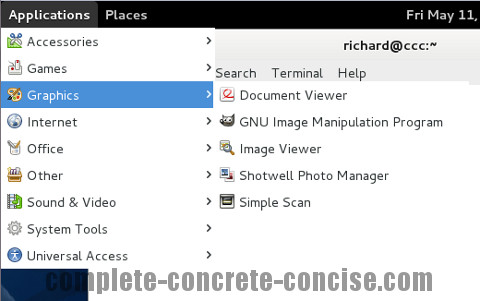
(3) It insists on popping up unnecessary warnings to users. This is from the Add/Remove Software application when you click on Package Collections:

A better solution would be to either (1) refresh the cache without notifying the user, or (2) display a Yes / No dialog with the question: “The cache is invalid, would you like to refresh it?” (even that is too much information to the user). It should be option (1) and after 2 or 3 failures, then it should notify the user that something is wrong.
This is from the Add/Remove Software application when trying to install gcc (a compiler collection):
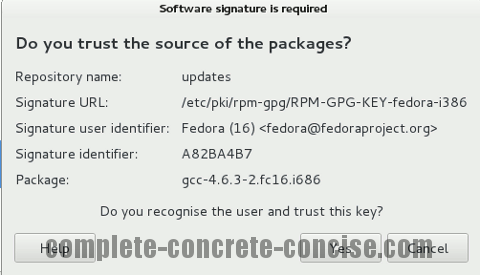
This is too much geek information for the average user. I think that software packages managed by Fedora should be automatically instead of asking the user if they trust it.
Background
I’ve played with Linux for almost 20 years. My first experience was trying to compile it, in the early 90s, from sources (gotten off a CUG CD?), but Turbo C wasn’t able to compile it.
By the mid-90s, I was playing with compiled distributables. While they were interesting and often had some neat features, I never considered them ready for the desktop.
Ubuntu 11.04 was the first Linux distro I thought just worked out-of-the-box and could be deemed ready for the desktop. When Ubuntu 11.10 seemed to take a step backwards I began trying out other Linux distros (to their credit, Ubuntu did quickly recover their mistep).
When I tried Fedora 15 in November 2011, it was a complete failure – it would not even install. It would go through the whole installation procedure only to lock up at the end.
Fedora 16 did install.
The Setup
I installed Fedora in a VirtualBox (4.1.12r77218) system. The virtual machine was configured to have 1 cpu, 1024Mb memory, 128Mb video memory (3D acceleration enabled), 8Gb hard drive.
I installed the VirtualBox Guest Additions.
Some images may be clicked for full sized versions.
Installation
Unlike Fedora 15, Fedora 16 did install, although the initial messages displayed when booting off the install DVD were not encouraging:
Installation was quick. This is probably because I downloaded the 3.7GB DVD image and it installed off the DVD without downloading files from the Internet.
While the installation procedure is not too complicated, it is certainly not as simple as Ubuntu’s or Linux Mint’s.
I chose the basic install (although I was tempted to install development tools as well).
First Boot
After installation, I rebooted the machine and was delighted to see it boot up with no problems.
The default background image is an underwater scene that is strongly reminiscent of 20,000 Leagues Under the Sea (one of my favourite books):
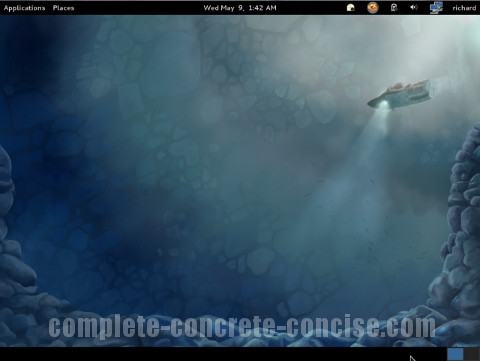
Problems
While it did boot up and various applications I tried worked, there are at least two applications that don’t work: Software Updates and Add/Remove Software.
As mentioned above, this was caused by VirtualBox Guest Additions not installing (despite my thinking they had).
Of course, Fedora should allow me to recover from a failed software install instead of become resasonably unusable.
This effectively means I can’t apply software updates (including security updates) to the system, nor can I install new software packages – effectively rendering the system useless.
When launched, both applications display the following warning:
Not the most user friendly message, but at least it suggest (to me) a course of action. I opened up a terminal and ran yum-complete-transaction as root:
It tells me there is one transaction that needs to finish:
As it runs, it displays page after page of warnings and errors:
Trying the recommended suggestion to run with the flag --skip-broken doesn’t help either.
Finally, I get the following notification (not consistently, when logging in):
Conclusion
From my experience, Fedora Linux is an extremely big disappointment because it just doesn’t work out of the box.
What makes it more disappointing is that it is based on the venerable Red Hat Linux – a distro I played around with in the 1990’s.
Of course, nowadays, Red Hat makes its money selling service and support to enterprises, not by giving away free copies of its Linux distribution.
Of all the Linux distros I’ve tried since 2011, Fedora Linux is the only one that doesn’t work. Period.
Other distros may have issues (not recognizing my WiFi adapter being most common), but at least they work.
